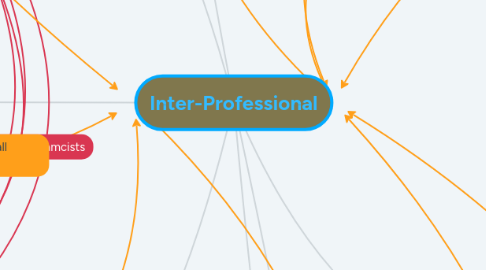
1. OH&S
1.1. Safety - no cross contamination
1.2. Understand risk management
1.3. environmental safety
1.4. Understanding how to deescalate clients
1.5. Safe use of equipment
1.5.1. Mortal and pestle
1.5.2. Drug storage and contamination
1.5.3. Pill cutters
1.5.4. solutions for mixing
1.5.5. Changing toner in printer/fax/copiers
1.5.6. Car seats
1.6. Personal Safety
1.6.1. Working alone
1.6.1.1. Working with aggressive client alone
1.6.1.2. Home visits
1.6.2. Working rural or community based settings
1.6.2.1. informing others of location
1.6.2.2. working in areas of no cell reception
2. Communication
2.1. Asking Questions
2.2. Providing information
2.3. Collaboration
2.4. Assessment
3. Tracking/documenting charts
3.1. Notation styles
3.1.1. SOAP
3.1.2. BATHE
3.1.3. IRS
3.1.4. Strength Based
3.1.5. FIFE
3.1.6. FARM
4. Ethics
4.1. Pharmacist/client relationship
4.2. Confidentiality
4.3. Privacy
4.4. Integrity
4.5. Social worker/client relationship
4.6. Non-Maleficence
4.7. Transparency
5. Pharmacist
5.1. Continuing Education
5.1.1. Update knowledge of drug classes
5.1.2. Update information on drug interactions
5.1.3. Provide education on how drugs and compounds work
5.2. Gender
5.2.1. Knowledge of dosing based on Gender
5.3. Accuracy in distribution
5.3.1. Knowledge of various measurements and scales
5.3.2. Double check - technicians distribution
5.3.3. Knowledge of quality
5.3.3.1. Maintain safe storage
5.4. Evidence-informed approach
5.4.1. Best evidence
5.4.1.1. Drug interaction protocols
5.4.1.2. Use most up to date information
6. Social Work
6.1. Advocacy
6.1.1. Social rights
6.1.2. Negotiating bureaucracies
6.1.3. Social Justice
6.1.4. Best Interest of client/patient
6.2. Use various methods/frame works of Practice
6.2.1. Future focus
6.2.2. CBT
6.2.3. Risk Assessment
6.2.4. Harm reduction
6.2.5. Psycho-social
6.2.6. Strength Based
6.2.7. Problem Solving
6.2.8. McMaster Family functioning
6.3. Cultural Competence
6.3.1. Historical issues
6.3.2. Knowledge of aboriginal issues and impact of colonization
6.3.3. Knowledge of different cultures
6.3.4. Knowing the difference between races
6.4. Gender and sexuality knowledge
6.4.1. Understand feminism
6.4.1.1. Understand race within Feminism
6.4.2. Understand issues around gender identity
6.4.3. Understand issues around sexual expression
6.4.4. Understand how race and culture effect gender and sexuality identification
6.5. Continuing education
6.5.1. update and refresh framework knowledge
6.5.2. Update & learn policies
6.5.3. Obtain new skills
7. Health Promotion
7.1. Individual
7.1.1. promoting physical and mental health
7.1.1.1. Discussing addictions
7.1.1.2. medication interaction
7.1.1.3. Affects of alcohol
7.2. Community
7.2.1. promoting safe communities
7.2.2. promoting community services
7.2.3. Community education and advocacy
7.3. System
7.3.1. sit on boards - to effect change
7.3.2. research
7.3.3. policy development
